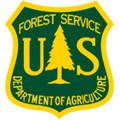Erosion Control Blankets
Sandbaggy Erosion Control Blankets are available in rolls of coir, jute, coconut, or straw. Our eco-friendly & biodegradable matting is great for controlling erosion and retaining sediment on a variety of slopes, flow channels, and embankments, allowing vegetation to take root and grow.
Order a single erosion control rolls as low $79 (jute netting), or as low as $72 per roll (straw matting) when you buy in bulk.
These products are also known as Erosion Control Matting.
Types of Erosion Control Blankets
- Coir erosion control blankets: Coir is a natural fiber derived from the husk of coconut. Coir erosion control blankets are made from woven coir fibers that are biodegradable and have high water retention capacity. They are effective in preventing soil erosion and promoting vegetation growth on slopes and embankments. Coir erosion control blankets are suitable for use in areas with moderate to high erosion rates.
- Jute erosion control blankets: Jute is a natural fiber derived from the stem of the jute plant. Jute erosion control blankets are made from woven jute fibers and are biodegradable. They are effective in preventing soil erosion and promoting vegetation growth on slopes and embankments. Jute erosion control blankets are suitable for use in areas with low to moderate erosion rates.
- Coconut erosion control blankets: Coconut erosion control blankets are made from coconut fibers that are woven into a mesh. They are biodegradable and have high water retention capacity. They are effective in preventing soil erosion and promoting vegetation growth on slopes and embankments. Coconut erosion control blankets are suitable for use in areas with moderate to high erosion rates. Use coconut blankets for steep 1:1 slopes.
- Straw erosion control blankets: Straw erosion control blankets are made from woven straw fibers and are biodegradable. They are effective in preventing soil erosion and promoting vegetation growth on slopes and embankments. Straw erosion control blankets are suitable for use in areas with low to moderate erosion rates. They are typically less expensive than other types of erosion control blankets.
Installation
- Preparation:. The area should be cleared of any debris or vegetation that could interfere with the installation process. The slope should also be properly graded to ensure that water flows away from the installation area.
- Mat Selection: The appropriate type of matting should be selected based on the site's erosion control needs. Factors such as slope gradient, rainfall intensity, soil type, and vegetation type should be taken into consideration.
- Anchoring: Erosion control matting should be anchored to the ground to prevent it from shifting or being carried away by wind or water. Staples, pins, or stakes can be used to anchor the matting in place.
- Overlap: When installing multiple pieces of erosion control matting, it is important to ensure that they overlap sufficiently to prevent any gaps in coverage. The recommended overlap distance will depend on the type of matting being used.
- Join Seams: If two or more pieces of matting need to be joined, they should be overlapped and securely fastened together to prevent any separation.
- Seedbed preparation: A suitable seedbed should be prepared before the installation of the matting. This will provide a favorable environment for seed germination and establishment.
- Mulching: Mulch should be applied on top of the erosion control matting to help retain moisture, prevent soil erosion, and promote seed germination.
- Maintenance: Erosion control matting should be regularly inspected and maintained. Any damage or degradation should be promptly addressed to ensure the continued effectiveness of the matting. Additionally, regular watering and fertilization should be provided to support healthy vegetation growth.
FAQ
Do erosion control blankets work?
Yes, erosion control blankets are effective in preventing soil erosion and promoting vegetation growth on slopes and embankments. They help to stabilize soil and prevent sediment runoff, which can be harmful to the environment. Erosion control blankets are typically made from natural materials such as coir, jute, coconut, and straw, and they degrade over time, leaving behind a layer of organic matter that enriches the soil and promotes healthy vegetation growth.
How long do erosion blankets last?
The lifespan of an erosion control blanket depends on several factors, including the type of material used, the slope angle and severity of the erosion, and the amount of precipitation and weathering. In general, erosion control blankets can last anywhere from six months to two years, depending on the conditions. Coir erosion control blankets tend to have a longer lifespan than other types, as they are more resistant to degradation.
When to remove erosion control blanket?
The timing for removing an erosion control blanket depends on the growth and establishment of vegetation in the area. The blanket should be removed once the vegetation has become established and the roots have penetrated the soil. The timing for this can vary, but it is typically between six months to two years after installation. However, if the erosion control blanket begins to degrade or break down before the vegetation has fully established, it should be removed and replaced to avoid any negative impacts on the environment. It's also important to note that erosion control blankets should not be left in place indefinitely, as they can eventually smother the vegetation and prevent healthy growth.






















